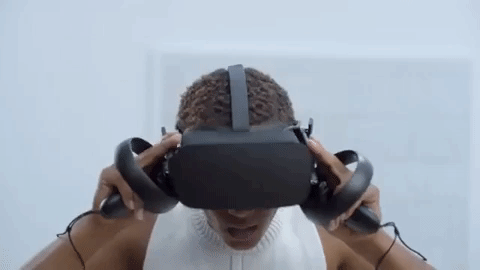Mobile App Development Trends for 2018 & Beyond
Here are some of the most promising mobile app development trends for 2018 and the years to follow.

Despite numerous technology-related innovations from a wide-range of different tech niches, mobile app development is bound to grow beyond our wildest imagination in next couple of years.
The first quarter of 2017 has already seen around 350 million mobile devices shipped from smartphone manufacturers and into the hands of the consumers, indicating a rapid growth in sales in mobile devices, as well as usage trends regarding smartphone-like devices.
This is hardly surprising, once we consider the ever-increasing power of mobile CPUs and GPUs, better battery lives and storage improvements, but also the improvements in software needed to run various, high-end applications.
In fact, the rapid evolution of mobile hardware and software has resulted in a wide variety of applications, ranging from Bluetooth-enabled proximity sensing used for social media check-ins and push notifications, location-based technologies, secure transfer applications and all the way up to mobile AIs and AR and VR-enabled technologies.
This is exactly why so many big brands and companies are investing in mobile app development. Here are some of the most promising mobile app development trends for 2018 and the years to follow.
Get the Best Updates on SaaS, Tech, and AI
Augmented and virtual reality

While virtual reality and VR-enabled applications are enjoying a large portion of the market for some time now, their development and subsequent application have delivered hit-and-miss results.
Current virtual reality headsets are still quite expensive for the average consumer and it seems that the trend has found a worthy successor: augmented reality. Further supporting this claim is the fact that Apple has released an augmented reality toolset aimed at third-party developers in order to create AR-enabled apps for iPhones and iPads.
Once you consider that Apple has hundreds of millions of devices already in the hand of their consumers, it becomes apparent that augmented reality has surpassed being a simple trend.
Furthermore, Apple is currently focused on developing a consumer-ready headset that will feature a built-in display capable of streaming video in 3D, something that will greatly reduce battery drainage of their mobile and handheld devices.
The tech giant has even developed their own augmented reality chip that will be used to power the AR headset.
Google is hardly lagging behind and has also released their own augmented reality toolset aptly named ARCore that features environmental understanding used for detection of flat surfaces, motion tracking based on camera and internal sensors and even light estimation in order to reproduce accurate shadows for their augmented reality content.
Artificial intelligence

AR-based machine learning tech has truly done wonders when it comes to user experience. The best example is the one we’re all too familiar with, Apple’s own speech recognition system called Siri.
Google is also relying heavily on AI for a number of their applications, with the Google Translator app being in the forefront of AI-enabled technological innovation.
Customer insight is crucial for business, as it allows brands to make adequate decisions, devise and implement advertising strategies and manage various business operations. Up until recently, brands had to rely on analytics and Big Data as the sources of customer insight.
Today, however, machine learning and artificial intelligence are being used in completely new and innovative ways for both contextual and real-time digging for customer insights.
Tech giants such as Adobe, Google, and Salesforce have set out sizable portions of their budgets for the development and testing of cognitive computing technologies, as well as applicable machine learning and AI solutions.
We’re already seeing some of these solutions in action, namely in the form numerous chatbot applications that are currently being used by brands and companies to automate and improve their online businesses.
Location-based services

Nearly all smartphones produced today come equipped with Bluetooth and GPS capabilities which are being used by both manufacturers and retailers to leverage various location-based services to their full potential.
Pokémon GO is the perfect example, being a location-based game that relies on player location to generate a playable map and lures user in by having them chase and catch virtual Pokémon.
That said, games are hardly the only application of location-based services. They are also being used in social media apps, weather and travel apps and even coupled with photos and videos apps to help users manage their photo albums.
The advantages offered by artificial intelligence, AR and VR-enabled apps and location-based services include boosting engagement, improving the success of various marketing incentives such as coupons, discounts, and promos, using personal information to improve customer experience and even improve in-store sales.
These advantages are by no means a small feat, and they only reaffirm the fact that these are just some of the trends that have not only prevailed through the last couple of years but will also continue trending in the next couple of years.
FTC Disclosure: The pages you visit may have external affiliate links that may result in me getting a commission if you decide to buy the mentioned product. It gives a little encouragement to a smaller content creator like myself.


